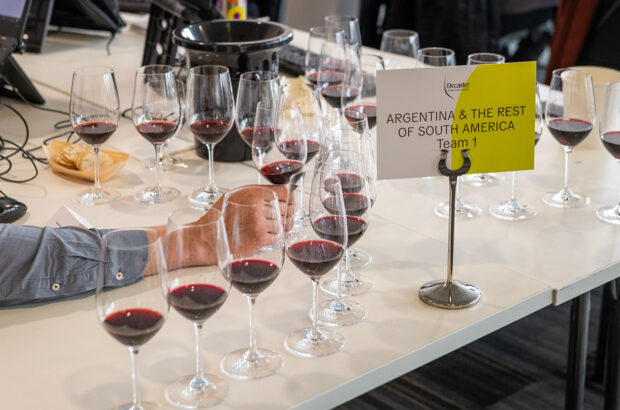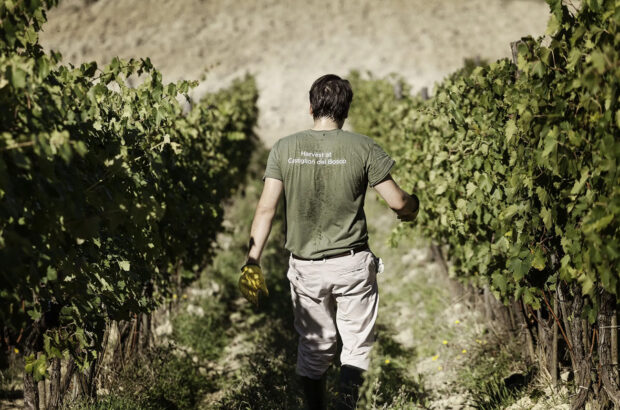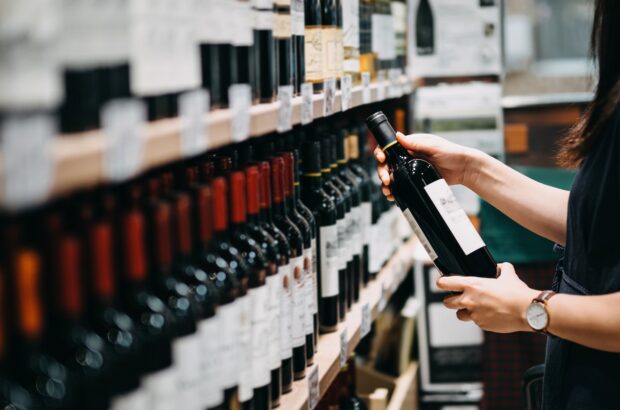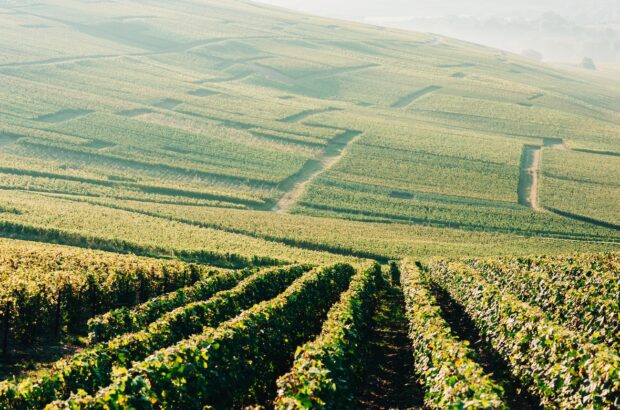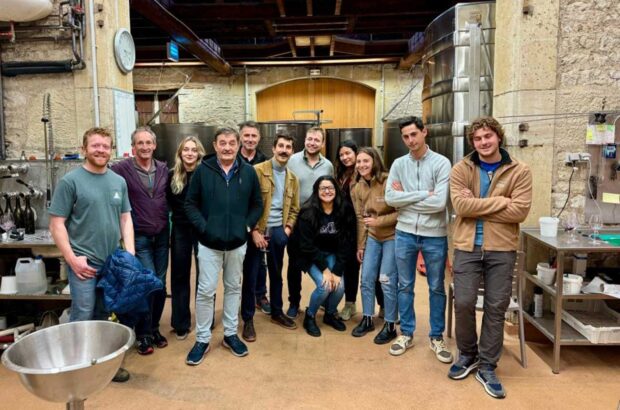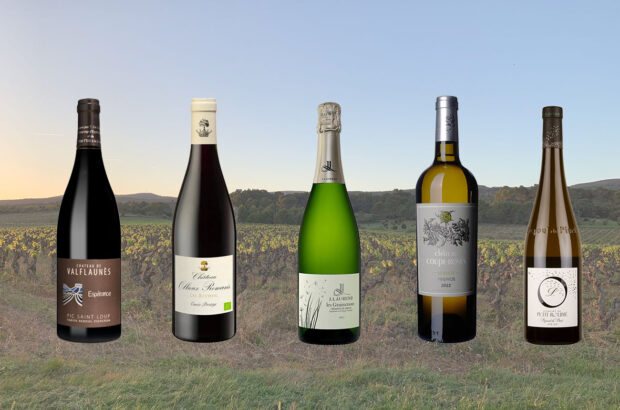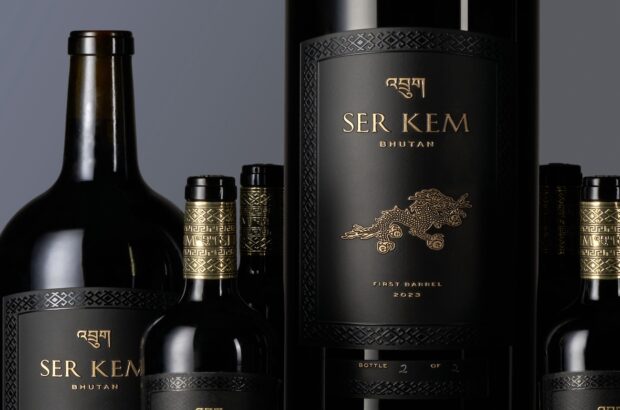Most visitors to Bordeaux head straight for St-Emilion, Bordeaux city centre or the Médoc’s Route des Châteaux along the D2, and don’t get much further. But those who prefer to get off the beaten track and don’t mind focusing on less glitzy wines will be amply rewarded by a stay in Entre-deux-Mers. Often overlooked, this is Bordeaux’s largest wine region, scenically beautiful, with a gamut of affordable wines made by traditional winemaking families.
The name Entre-deux-Mers refers to the marées (‘tides’) of the bordering large tidal rivers: the Dordogne and the Garonne. The region accounts for about one third of the Gironde’s wine production, thanks to some 7,000ha of vines spread over 18 communes, so there’s plenty of choice when it comes to estates to visit and wines to taste (for more information, go to the regional tourism site).
Among rolling hills of vineyards, some of which were first planted in Roman times, you’ll find bastides (fortified villages) built in the Middle Ages, centred around bustling market squares. Visitors will find much to do and see in this dynamic region. Here are 10 reasons to convince you.
1. Stay a while

Restaurant Le Jardin d’Henri at Château Toulouse Lautrec Malromé
From the four-star, newly renovated rooms at Château Fage, southwest of Arveyres, to tree houses, gypsy caravans and transparent bubbles at Cabanes de la Romaningue, near Pompignac, the Entre-deux-Mers has plenty of accommodation offerings. The grand 17th-century Château de Reignac, just outside St-Loubès, is available to rent via Airbnb, while Château de Bonhoste in St-Jean-de-Blaignac is home to two 20m2 wooden fermentation vats converted into mini studios.
Wellness retreats can be found at Château Toulouse Lautrec Malromé, St-André-du-Bois, while La Girarde B&B, run by English couple Trish and Mark Tyler, has four ensuite rooms and a pool set in beautiful gardens, just north of St-Quentin-de-Caplong. Château Ferret Lambert in Grézillac has two gîtes, one in the orangery of the château with its own pool, and the other in a renovated pigeon tower. Château Bauduc, near the bastide town of Créon, is surrounded by woods, fields and vineyards. The well-known Quinney family rents its four-bedroomed farmhouse with pool from April to October.
2. Diversity of styles
The region’s limestone subsoil is a continuation of the St-Emilion plateau, with streams that dissect the slopes depositing clay and sandy gravel. Thanks to this diversity of terroir and topography, Entre-deux-Mers produces excellent dry whites, some semi-sweet whites, red Bordeaux and Bordeaux Supérieur (see point 4, ‘A new focus on reds’), rosé, clairet (sitting between red and rosé, with extended skin contact during maceration, often a few days compared to rosé’s few hours and red’s few weeks) and Crémant de Bordeaux sparkling – often all made by a single château.
3. Art & architecture

The terrace at Château de Camarsac
Dotted with charming medieval villages and towns, each boasting its own architectural style, Entre-deux-Mers is filled with historic châteaux, numerous art galleries and Romanesque churches such as La Sauve-Majeure Abbey in La Sauve, founded in 1079 for pilgrims on the Santiago de Compostela route and now a UNESCO World Heritage site.
Château de Camarsac in Camarsac was built over five centuries from the 11th century. It has been restored by Solange and Thierry Lurton, and visitors can ascend to the roof terrace for some of the best views of the region. In 1888, the 16th-century Château Toulouse Lautrec Malromé (see point 1, ‘Stay a while’) became home to its most famous resident, artist Henri de Toulouse-Lautrec. His apartments are perfectly preserved for visitors.
4. A new focus on reds
The Entre-deux-Mers appellation was created in 1937, uniquely for white wines that are a blend of at least two of four principal varieties – Sauvignon Blanc usually being dominant – with Colombard and Ugni Blanc also permitted in smaller quantities. In August 2023, a major and historic change to the regulations was approved that will allow the name Entre-deux-Mers to be applied to red wines from the region, starting from the 2023 vintage. Previously only permitted to bottle their reds under the Bordeaux or Bordeaux Supérieur designations, winemakers will now be able to diversify and focus on quality red grape varieties, principally Merlot, Cabernet Sauvignon, Cabernet Franc, Cot (Malbec) and Petit Verdot. The first Entre-deux-Mers AP reds are expected to reach consumers from January 2025. Worth noting: single-variety wines, white or red, will continue to be labelled as AP Bordeaux.
5. Family friendliness

The ‘wine train’ at Domaine de la Grave. Credit: François Blazquez
The Roche family of Domaine de la Grave (+33 [0]5 56 72 41 28) and the Teycheney family of Château La Loubière share a history of ownership spanning five and six generations respectively. During school holidays, their ‘wine train’ in the grounds of Domaine de la Grave near Beychac-et-Caillau becomes a magical mystery tour through the vines, where participants must solve a vineyard puzzle.
The Once Upon a Time on the Planet experience at Château de Reignac shows families how vital the environment is to winemaking. Visitors prepare their sense of smell in the aroma garden and greenhouse before tasting in the 16th-century dovecote.
6. Locavore
Visit the thriving morning markets in the bastide towns of Créon and Pellagrue on Wednesdays, Branne on Thursdays and Monségur on Fridays.
For homemade cheese and a visit to the limestone caves in which it ages, seek out shepherdess Annie Dreillard at the Bergerie de Daignac (get in touch to make sure she’s there: bergeriededaignac@orange.fr, +33 [0]6 81 45 88 66). And for organic saffron, Lauriane Gouyon grows organic crocuses in her family vineyard. The Terr’a Safran shop near Carreyre is open Saturday mornings or by appointment.
If eating out, head to Château Toulouse Lautrec Malrome’s restaurant Le Jardin d’Henri, or opt to enjoy its elegant La Table Privée du Château experience (for groups of eight to 14 people), both of which focus on local, organic ingredients. Caffé Cuisine in Branne (@caffeecuisine) is a popular hotspot with a great menu and wine list, an outdoor terrace in the summer and roaring fire in the winter. Auberge Saint Jean also offers excellent cuisine on the banks of the Dordogne in St-Jean-de-Blaignac, and at Lune Restaurant, located a stone’s throw from the monumental Château de Vayres in Vayres, chef Pierre Rigothier showcases his Michelin-star experience, gained during stints in kitchens across France and the UK.
Many châteaux, such as Domaine de la Grave (see point 5), offer picnic selections to enjoy with their wines.
7. A taste of the unexpected

Picnic at Château Le Grand Verdus. Credit: Morgan Larroche
Winemakers are increasingly experimenting with ‘forbidden’ grape varieties and producing wines outside appellation rules, including Vin de France, orange wines and more. Château Thieuley in La Sauve Majeure, run by sisters Marie and Sylvie Courcelle, offers a range that includes white, rosé, red, sparkling, and Chardonnay and Syrah Vins de France, all available to sample from wine-dispensing machines.
Over at the 16th-century Château Le Grand Verdus, northeast of Sadirac, brothers Edouard and Thomas produce an eclectic range that includes a pét-nat and a 100% Semillon orange wine. They have also planted Syrah from Cornas in the Rhône (with Edgar Cuilleron helping with their first vintage) and Chenin Blanc, alongside a collection of historic Bordeaux varieties.
8. Active pursuits
With an old railway track linking Bordeaux to La Réole now a bicycle track, it’s easy to stay fit in Entre-deux-Mers. Join the locals surfing on the ‘Mascaret’ tidal bore or swim and water ski on flooded quarries in Espiet or Château de Reignac’s 8ha lake. If dancing is more your thing, check out the tango at the Friday and Saturday night pop-ups at Vignobles Degas in St-Germain-du-Puch throughout the summer, with live music and tapas.
9. Biodiversity

Estelle Roumage, the third-generation winemaker at Château Lestrille. Credit: Mathieu Anglada
Entre-deux-Mers wine estates are almost exclusively family owned and run, a stewardship that explains the region’s widespread adoption of sustainability philosophies and makes it one of Bordeaux’s most biodiverse, with 94% of the region under environmental certification. There’s less monoculture here, with woods, streams, pastures and other crops.
Estelle Roumage is the third-generation family winemaker at Château Lestrille in St-Germain-du-Puch. She champions sustainable viticulture and agroforestry, celebrating the 120th anniversary of the certified-organic property with a nature trail and Miyawaki-method forest to share her philosophy with visitors.
Château Tour de Mirambeau in the village of Naujan-et-Postiac has passed down through eight generations of women to Thibault Despagne, who tends vines planted across the region’s rolling hills. Visitors can taste a range of wines, including the award-winning Cuvée Girolate red, made in an ancient walnut oil mill.
The 17th-century fortified property of Château Fonfroide (@chateau.fonfroide), northwest of Coubeyrac, is named after a cool spring that emerges from the limestone plateau. Hugues Dutheillet de Lamothe joined the family vineyard in 1988, making his red, white and rosé wines in the original 1777 cellar. Visits are informal, hosted by Hugues and free if guests purchase a bottle or two – not a hardship.
10. Direct sales
The Entre-deux-Mers has become a haven for wine tourism in Bordeaux because it had to. The wines, at competitive price points, are rarely sold through the Place de Bordeaux. Instead, winemakers have had to create direct-to-consumer channels, happily welcoming visitors to their cellar doors (which all of the estates listed in this article have).
The shop and tasting room of the Entre-deux-Mers wine council, in the grounds of the La Sauve-Majeure Abbey, offers a complete range from the appellation, while Planète Bordeaux near L’Artigue stocks more than 1,000 rosé, white, red and crémant options from across the region.



